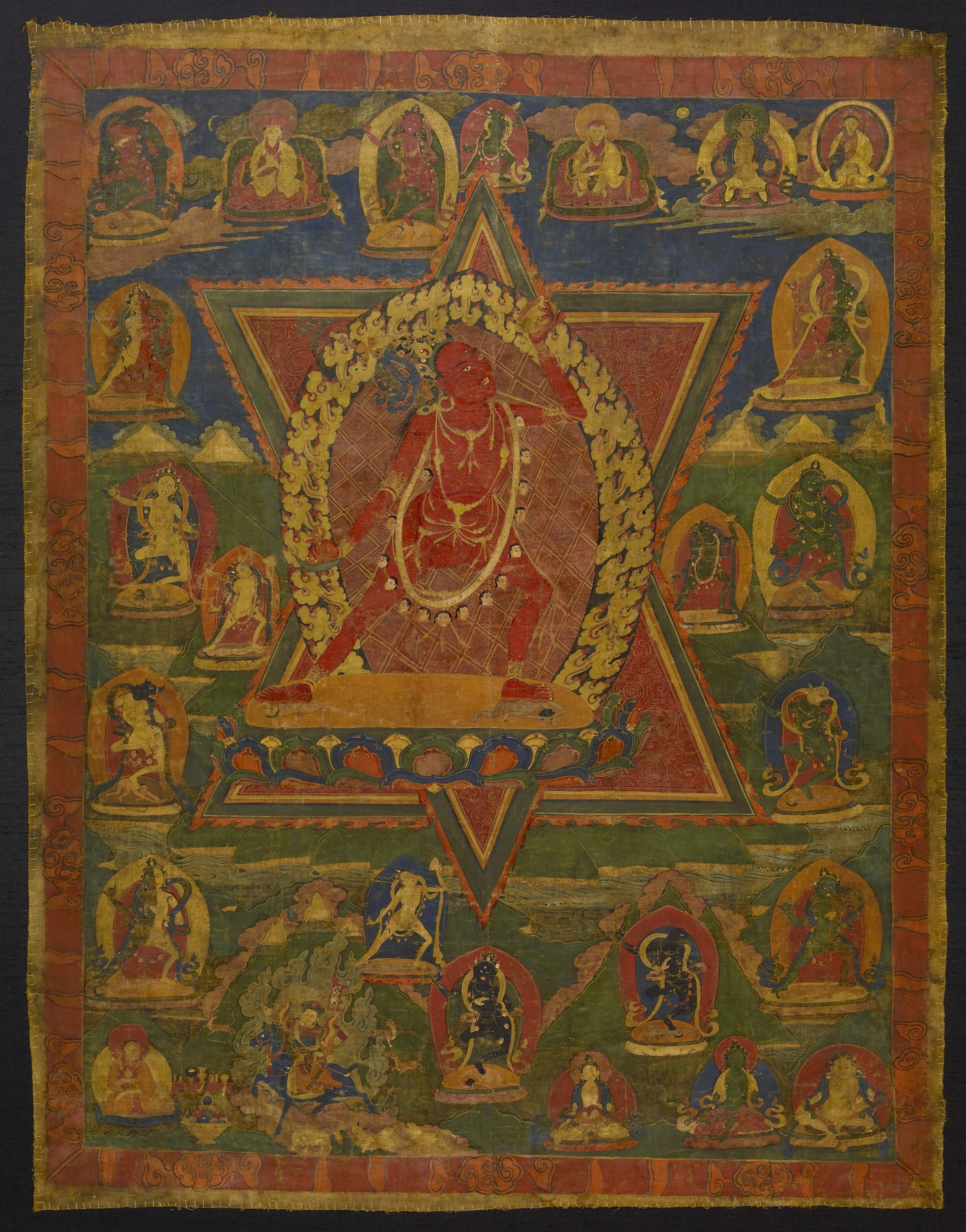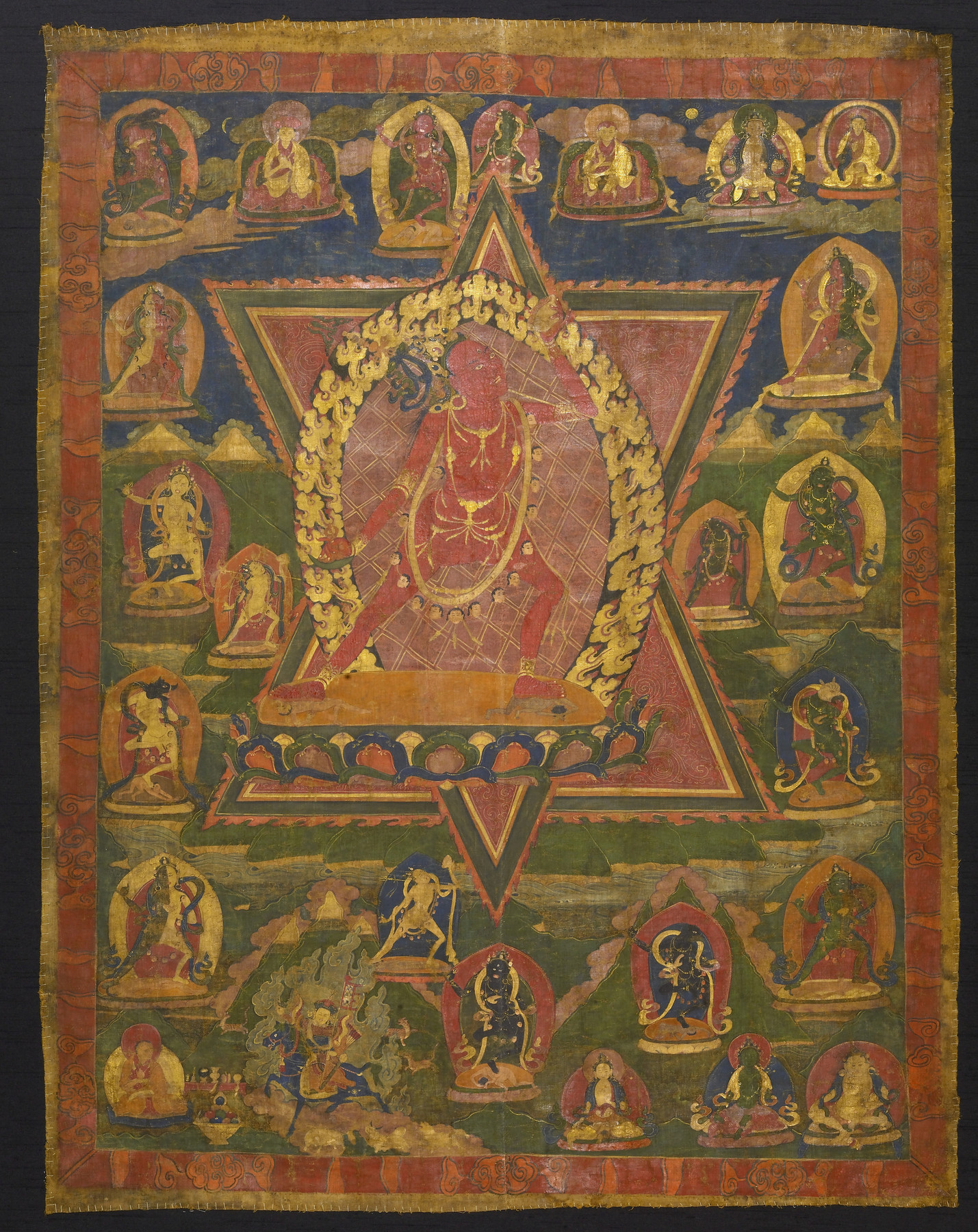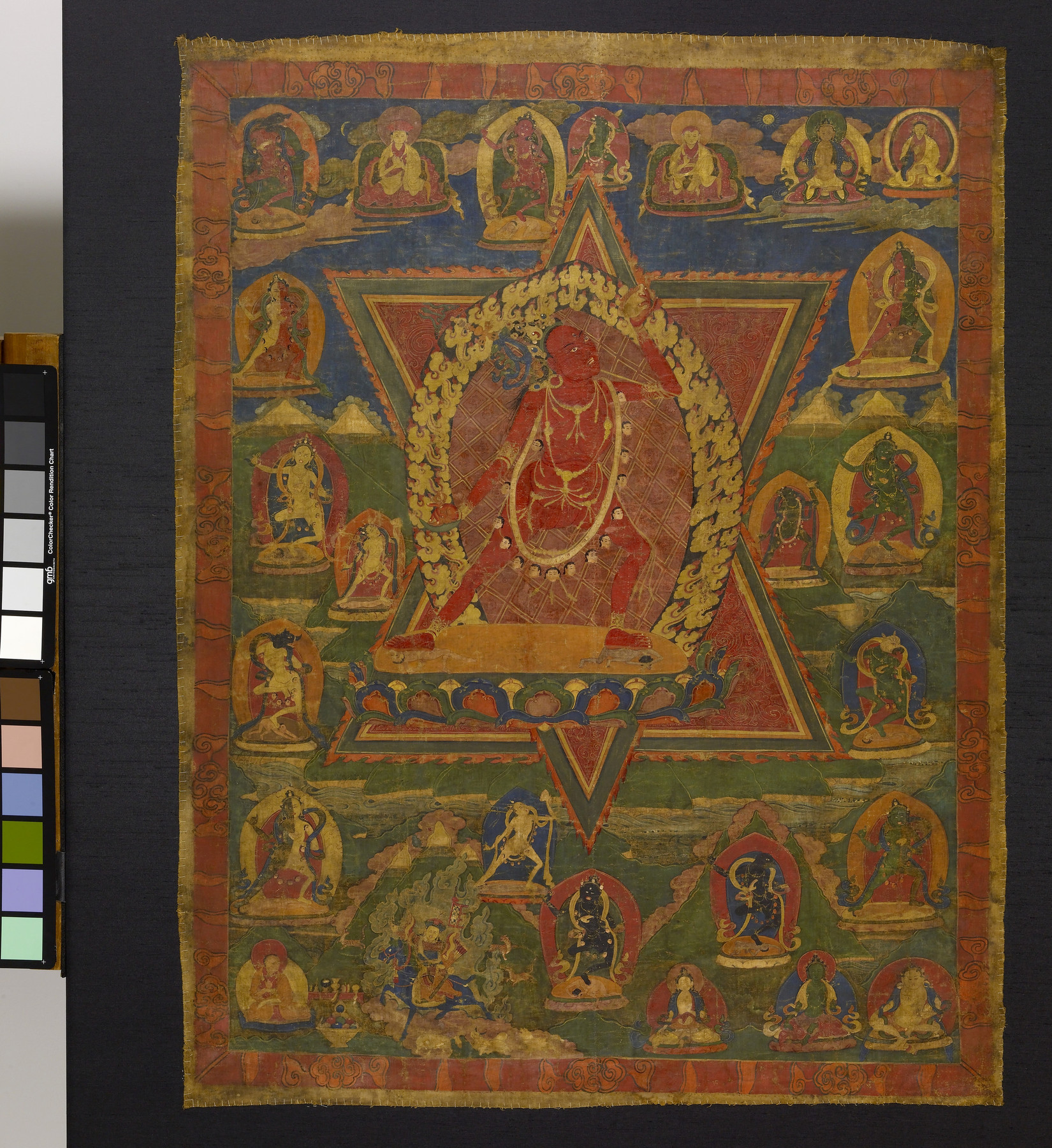Vajrayogini as Naro Dakini
(India, Nepal, and Tibet)
The goddess and Buddha Vajrayogini lunges powerfully as she tramples two figures that symbolize the three mental poisons: delusion, hatred, and desire. In this form, known as Naro Dakini, she is associated with the 11th-century tantric master Naropa, to whom she is believed to have revealed spiritual teachings. Holding a curved knife to sever the ignorance that is inherent to mundane perception, she lifts her skull-cup (symbolizing emptiness, the nature of true reality) to drink the blood it contains, which transmutes into the nectar of supreme, enlightened bliss. The double-triangle diagram that frames her has many layers of meaning and represents the origin of everything that truly exists. In meditation, one visualizes oneself as Vajrayogini arising from such a diagram, surrounded by attending figures, and destroying obstacles to enlightenment.
Joining Vajrayogini in her Himalayan paradise are four seated monks, who wear robes that cover their bodies, and numerous deities. The monk seated in the lower left corner, near a protector deity riding a blue horse, is likely the patron of this painting. In the upper right corner, surrounded by a rainbow, is Padmasambhava, an Indian monk who is credited with spreading Buddhist teachings throughout Tibet. Next to him is Avalokiteshvara, the bodhisattva of compassion. In the lower right is Green Tara, the compassionate savior goddess, flanked by the wealth deities Jambhala (in the corner) and Vasudhara.
Among the deities are also sixteen goddesses of Vajrayogini’s retinue, whose attributes and adornments echo those of the main goddess. Eight are positioned as guardians of the directions—the protectors of the intermediate directions have bodies of two colors—and four more have the heads of a crow, owl, dog, and pig. Like the goddess they accompany, their wrath is compassionate, for it destroys the common patterns of perception that impede enlightenment.
Provenance
Provenance (from the French provenir, 'to come from/forth') is the chronology of the ownership, custody, or location of a historical object.
Sonam Tashi, Hong Kong [date and mode of acquisition unknown]; purchased by John and Berthe Ford, Baltimore, August 1 1995.
Exhibitions
| 2016-2017 | Ferocious Beauty: Wrathful Deities from Tibet and Nepal. |
| 2001-2003 | Desire and Devotion: Art from India, Nepal, and Tibet in the John and Berthe Ford Collection. The Walters Art Museum, Baltimore; Santa Barbara Museum of Art, Santa Barbara; Albuquerque Museum, Albuquerque; Birmingham Museum of Art, Birmingham; Hong Kong Museum of Art, Hong Kong. |
Geographies
Tibet (Place of Origin)
Measurements
Image H: 38 × W: 29 in. (96.52 × 73.7 cm); Framed H: 60 13/16 × W: 40 7/8 x D: 1 5/16 in. (154.5 × 103.9 x 3.4 cm)
Credit Line
Gift of John and Berthe Ford, 2022
Location in Museum
Not on view
Accession Number
In libraries, galleries, museums, and archives, an accession number is a unique identifier assigned to each object in the collection.
In libraries, galleries, museums, and archives, an accession number is a unique identifier assigned to each object in the collection.
35.334






